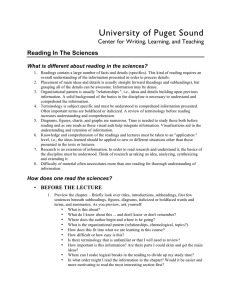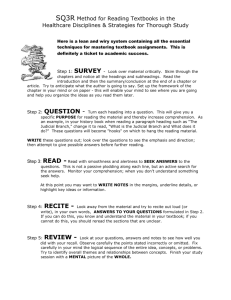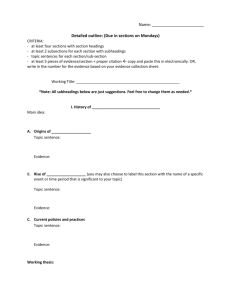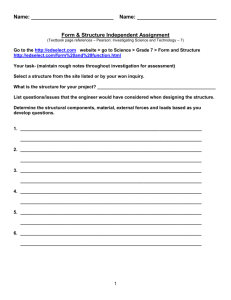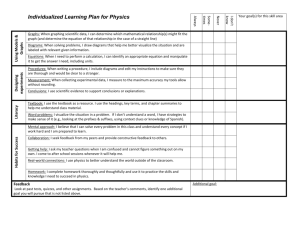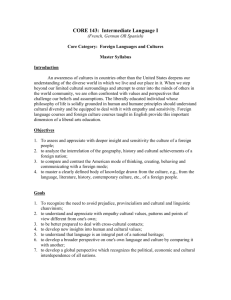Reading in the Sciences
advertisement
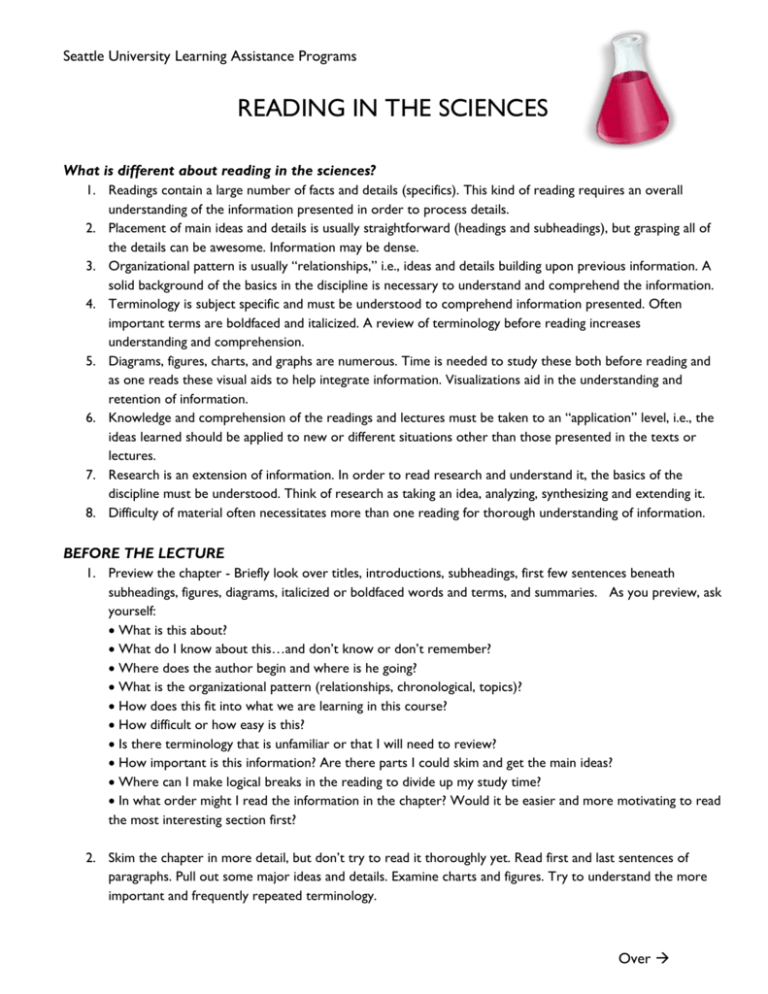
Seattle University Learning Assistance Programs READING IN THE SCIENCES What is different about reading in the sciences? 1. Readings contain a large number of facts and details (specifics). This kind of reading requires an overall understanding of the information presented in order to process details. 2. Placement of main ideas and details is usually straightforward (headings and subheadings), but grasping all of the details can be awesome. Information may be dense. 3. Organizational pattern is usually “relationships,” i.e., ideas and details building upon previous information. A solid background of the basics in the discipline is necessary to understand and comprehend the information. 4. Terminology is subject specific and must be understood to comprehend information presented. Often important terms are boldfaced and italicized. A review of terminology before reading increases understanding and comprehension. 5. Diagrams, figures, charts, and graphs are numerous. Time is needed to study these both before reading and as one reads these visual aids to help integrate information. Visualizations aid in the understanding and retention of information. 6. Knowledge and comprehension of the readings and lectures must be taken to an “application” level, i.e., the ideas learned should be applied to new or different situations other than those presented in the texts or lectures. 7. Research is an extension of information. In order to read research and understand it, the basics of the discipline must be understood. Think of research as taking an idea, analyzing, synthesizing and extending it. 8. Difficulty of material often necessitates more than one reading for thorough understanding of information. BEFORE THE LECTURE 1. Preview the chapter - Briefly look over titles, introductions, subheadings, first few sentences beneath subheadings, figures, diagrams, italicized or boldfaced words and terms, and summaries. As you preview, ask yourself: What is this about? What do I know about this…and don’t know or don’t remember? Where does the author begin and where is he going? What is the organizational pattern (relationships, chronological, topics)? How does this fit into what we are learning in this course? How difficult or how easy is this? Is there terminology that is unfamiliar or that I will need to review? How important is this information? Are there parts I could skim and get the main ideas? Where can I make logical breaks in the reading to divide up my study time? In what order might I read the information in the chapter? Would it be easier and more motivating to read the most interesting section first? 2. Skim the chapter in more detail, but don’t try to read it thoroughly yet. Read first and last sentences of paragraphs. Pull out some major ideas and details. Examine charts and figures. Try to understand the more important and frequently repeated terminology. Over 3. Don’t panic or become overwhelmed with the readings. They may be dense, but not unconquerable. By previewing and skimming the materials before the lecture, you can then use the lecture to clarify the level and depth of comprehension you’ll need to achieve when you actually read the chapter more thoroughly. 4. If the material is quite difficult and detailed, and if you have little recent background in the discipline, it might be useful to review the fundamentals and basic terminology in an introductory text in the field. IN CLASS 1. Be prepared to anticipate information acquired from pre-skimming your textbook, and listen for clues during the lecture that will help you focus on an appropriate level of comprehension when you read the related chapter(s) after the lecture. 2. Take lecture notes on the right side of your notebook page, and leave the facing left page free to add related notes summarized from your textbook. AFTER CLASS 1. Review and edit your notes taken from the lecture. Begin thinking about what additional information you’ll need to add from the text. 2. Read the related textbook material that you have previously skimmed. Re-preview and break the reading into logical sub-sections to be tackled one at a time. Plan far enough ahead of time that you’ll be able to take a break and move away from the material at the end of each sub-section if you feel overwhelmed. Often time is needed to allow the mind to gradually absorb complex ideas. Read carefully and methodically, referring to figures and diagrams as appropriate. “Self-pacing” by moving a card or pencil finger along as you read may help keep your attention focused on the task. After reading a sub-section, stop and recall what you’ve read: tell it to yourself in your own words; take relevant notes alongside the related lecture notes in your notebook, and/or make marginal notes in the textbook and highlight key details. (However, just highlighting in dense texts may not be the best form of recall since nearly all of many paragraphs may need to be highlighted and review would be difficult.) Draw your own diagrams or charts to summarize and translate information. Review your notes and the reading periodically. Information needs to be reviewed and used periodically for it to be stored in long term memory. 3. Reflect upon the information in various ways—e.g. How are these functions related to each other? How do they affect each other? Apply ideas learned to other or new situations: What would happen to the body if one of these areas/functions/organs were damaged or destroyed?, etc. 4. Anticipate and practice responding to the kinds of test questions which might be asked. 206.398.4450 learningassistance@seattleu.edu www.seattleu.edu/SAS/LearningAssistance rev 0728
